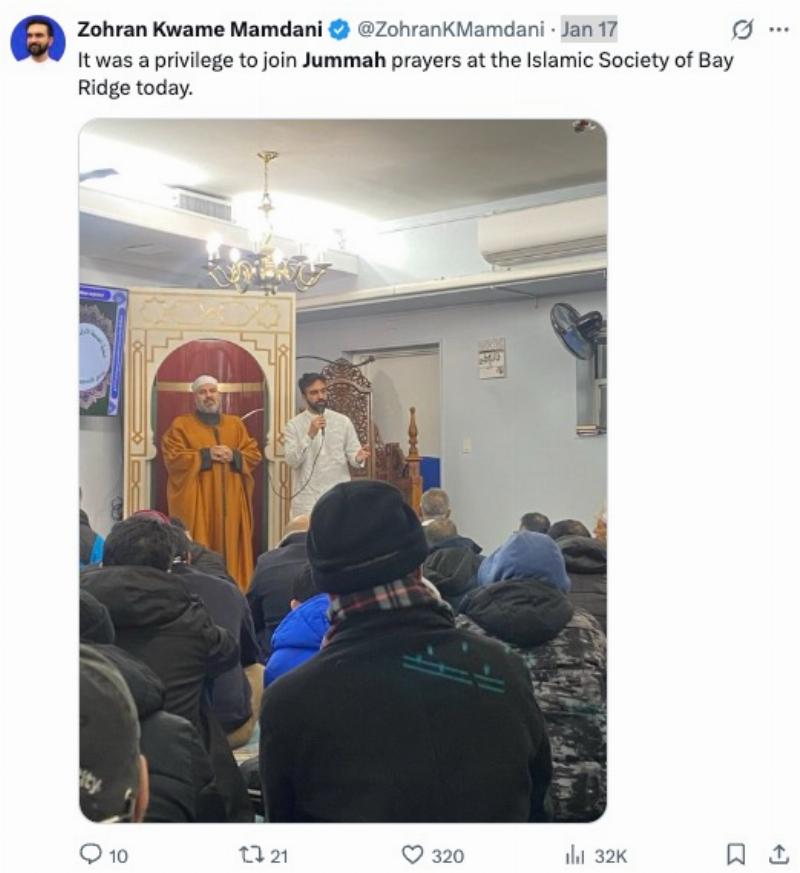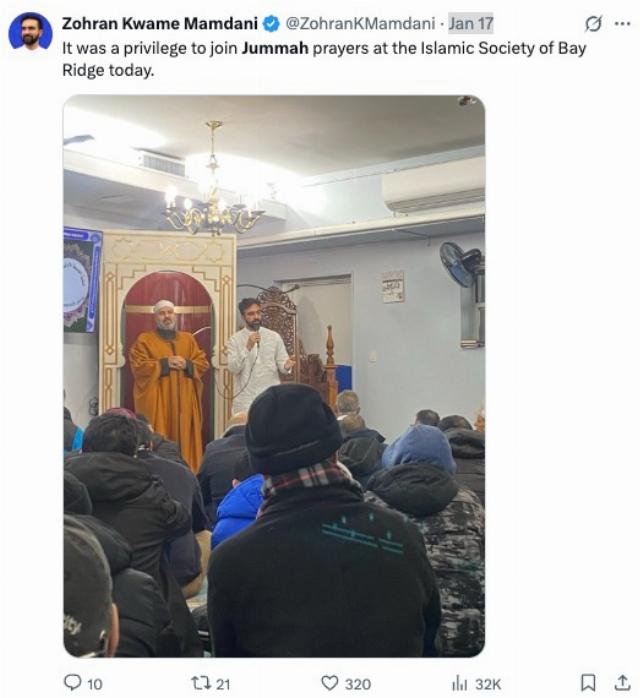


Zohran Mamdani, the Democrat party’s candidate for mayor of New York, has attracted attention for the fact that he’s a hardcore communist. However, his religious beliefs deserve some attention, too.
First, there’s the fact that he’s a Shia Muslim who is affiliated with the Twelver Branch that drives the Iranian mullahs. Back in 2006, the late Bernard Lewis wrote about this ideology when he explained why the mullahs are not necessarily amenable to the doctrine of mutually assured destruction:
In Islam, as in Judaism and Christianity, there are certain beliefs concerning the cosmic struggle at the end of time -- Gog and Magog, anti-Christ, Armageddon, and for Shiite Muslims, the long awaited return of the Hidden Imam, ending in the final victory of the forces of good over evil, however these may be defined.
[snip]
A passage from the Ayatollah Khomeini, quoted in an 11th-grade Iranian schoolbook, is revealing. “I am decisively announcing to the whole world that if the world-devourers [i.e., the infidel powers] wish to stand against our religion, we will stand against their whole world and will not cease until the annihilation of all them. Either we all become free, or we will go to the greater freedom which is martyrdom. Either we shake one another's hands in joy at the victory of Islam in the world, or all of us will turn to eternal life and martyrdom. In both cases, victory and success are ours.”
The Twelvers don’t fear Armageddon; they embrace it.
It’s unclear how fervent Mamdani’s beliefs are, especially given his Marxism. He may be an atheist who just lays claim to that identity for political advancement. Or he could be a true believer practicing Taqiya (dissimulation) against the West. Or, perhaps, he occupies a middle ground where he doesn’t believe in a fiery nuclear Armageddon. Simply bringing down the West from within may be enough.
What we do know, though, is that Mamdani boasted in January about it being “a privilege to join Jummah prayers at the Islamic Society of Bay Ridge today.”

Superficially, that looks like the kind of stop a candidate makes when he’s trying to rally voters—and it would be very strange for a Muslim candidate not to make that kind of stop. However, it turns out that this is not an ordinary mosque. Instead, it’s a Muslim Brotherhood mosque:
Moreover, as Daniel Greenfield details in an incredibly disturbing X thread, the imam thirsts for violent jihad against Jews and the West:The Islamic Society of Bay Ridge is a Muslim Brotherhood mosque. Its imam, Sheikh Mohamed Elbar, is a member of the Qatar-funded International Union of Muslim Scholars that has been responsible in part for the flow of jihadist foreign fighters to Syria and Iraq.… https://t.co/LKdG3fLg9D
— John Rossomando ☦???????? ???????? (@John_Rossomando) June 28, 2025
Here's the Imam whom Zohran Mamdani appeared with praying for Allah to 'guide the shooting' of Hamas and calling for the destruction of Israel pic.twitter.com/X1eGhLoEnw
— Daniel Greenfield - "Hang Together or Separately" (@Sultanknish) June 28, 2025
and a rally that prayed at the same terror mosque complete with Hamas flags and a funeral service for a Hamas leaderhttps://t.co/eNlmDQP8sh
— Daniel Greenfield - "Hang Together or Separately" (@Sultanknish) June 28, 2025
/4 pic.twitter.com/jjZPfFCzEV
An Imam urged teaching Muslim children to hste everything about America which he referred to as infidels.
— Daniel Greenfield - "Hang Together or Separately" (@Sultanknish) June 28, 2025
"Let us take these lessons and teach it to our children. Teach them to hate everything about kufr (infidels): the holidays, the dress, the manners"
/5 pic.twitter.com/uLmV9aqNNX
If the Imam is not a citizen, he should be deported for advocating terrorism. And if he is a citizen—as is Mamdani, who was naturalized in 2018—I’m betting an investigation would reveal that both concealed material facts about their affiliation with and support for Muslim terrorist organizations, which are grounds for revoking naturalization and beginning the deportation process.
I can assure you that, when the Founders ratified the First Amendment’s guarantee of religious liberty, they were not thinking in terms of foreign-born “religious” figures using their pulpits to advocate for America’s overthrow. Those subscribers who get our weekly newsletter will recognize the point I’m about to make now, regarding what the Founders meant when they contemplated religious liberty.*
The answer to the problem of religions actively antithetical to America (i.e., Islam) can be found in the Supreme Court’s 1878 decision in Reynolds v. United States. In that case, a Mormon charged with the crime of polygamy (a practice that is also part of Islam) argued that the First Amendment’s promise of religious liberty made the charging law unconstitutional.
The Supreme Court ruled against the defendant by using an originalist analysis. That is, it looked to what the Founders understood religious liberty to mean at the time that they ratified the Bill of Rights. Wolf Howling explains what this meant:
The Reynolds Court found that at the time of the drafting of the Constitution, all sects of the Christian faith in Europe and America had, since ancient times, practiced monogamy and had outlawed polygamy. It wan’t until the Mormon faith was created in 1830 and preached polygamy as one of its tenets that polygamy in the U.S. became an issue. The Court further found that polygamy was universally held to be criminal in the 13 states at the time that the Constitution was signed.
Thus the Court found that the Constitutional prohibition against free exercise of religion did not contemplate polygamy as within its ambit. The Court, describing polygamy as “odious” to the religious traditions protected by the Constitution, and further finding it to be an “act” that threatened the social order, the Court held that polygamy could be prohibited by the state.
Also implicit in the Court’s decision was that the Free Exercise clause protected mainstream Christian and Judaism and their religious doctrines extant in the U.S. at the time the Constitution was signed. Other religious beliefs and or religious beliefs claimed thereafter, to the extent that they conflicted with “peace and good order” and “societal duties,” could not claim the protections of the Free Exercise clause.
In other words, to the extent Islam advances principles that conflict with American law, the law, not Islam, wins. Imams cannot hide behind the First Amendment to advance Islam’s mandate for violent jihad, and naturalized citizens can’t do so either, even if they are running for mayor.
Mamdani isn’t just bad news for New York; he is the face of a dangerous and unconstitutional ideology that has taken root in America.
*If you are a subscriber and are not receiving the weekly newsletter, check your spam and trash folders. If your email server is anything like mine, it routinely sends the newsletter to one or the other of those folders.
